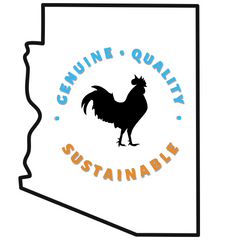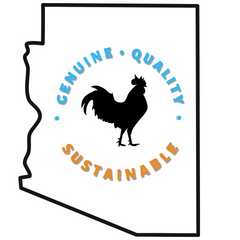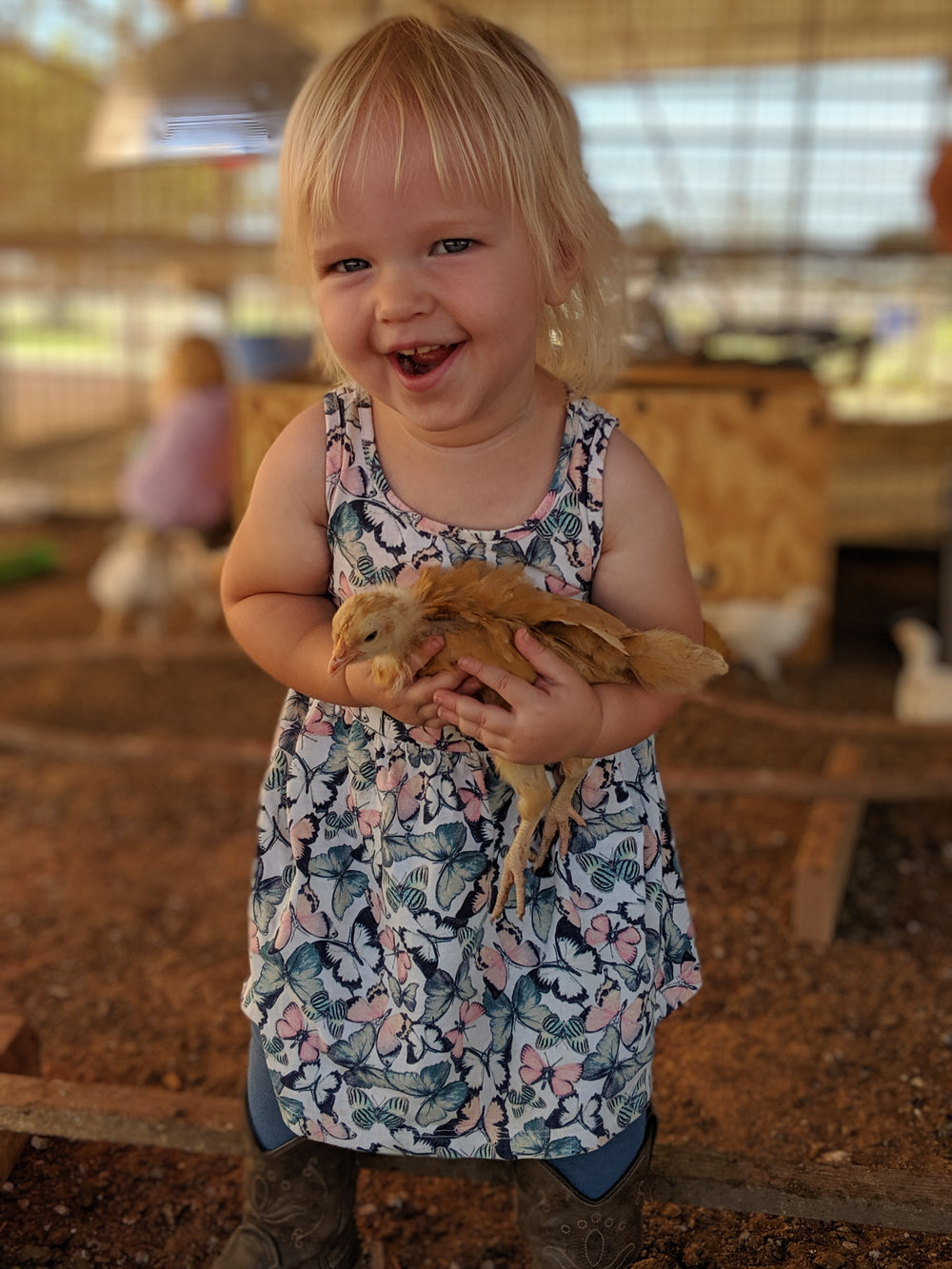Molting Season Nutrition Guide: Fall 2025
Molting Season Nutrition Guide: Fall 2025
Every fall, shortening days tell your hens it’s time to shed worn feathers and grow new ones. That molt is protein-intensive—feathers are over 80% keratin—so your nutrition plan must change if you want fast, even regrowth and a smooth return to laying. This guide gives you precise feed targets, a weekly supplement rotation, hydration strategy, and troubleshooting steps based on poultry extension best practices and seasoned flock management. We’ll start with why molt changes nutrition needs, then move into exact targets, what to buy, and how to put it all into a simple routine.
Key Takeaways / Summary
- Why molting happens: Reduced daylight triggers a hormonal shift; feathers regrow rapidly and are >80% protein (keratin), so birds need higher protein and correct amino acids.
- Protein target: Feed 18–20% crude protein during molt, then return to ~16% maintenance once feathers finish and laying resumes.
- Best feed choice: Switch from a high-calcium layer ration to an all-flock or grower feed (18–20% protein) and offer oyster shell free-choice, not mixed into feed.
- What to look for on the tag: Minimum methionine and lysine, plus overall formulation quality; some premium formulas include omega-3 sources (flax) and better trace mineral profiles.
- Amino acids that matter: Methionine and cysteine (sulfur amino acids) and lysine are critical for feather synthesis.
- Treat limits: Keep scratch, corn, and kitchen scraps to under 10% of total intake so you don’t dilute essential amino acids.
- Smart add-ons: Consider rotating vitamin E + selenium, biotin, B-complex, and trace minerals (zinc, manganese, copper) to support feather and skin health.
- High-value treats: Modest portions of animal protein (mealworms, BSF larvae) and omega-3 sources (flax) can improve feather quality when used sparingly.
- Hydration plan: Fresh water daily; during heat spells, add electrolytes for 1–3 days and use wet mash to maintain intake.
- Light management: After molt, gradually increase to ~14 hours total daylength to support a return to lay.
- Reintroducing layer feed: Wait until laying resumes; keep free-choice calcium available once eggs return.
- Budgeting note: Premium all-flock feeds and animal-protein treats cost more; invest in feed quality first and use treats strategically for value.
Why Fall Molt Demands a Different Feed
Feather production ramps up as daylight falls, driven by hormonal changes that shut down lay and prioritize replacement plumage. Because feathers are comprised primarily of keratin (a protein), your flock’s protein and amino acid needs spike for 6–12 weeks, depending on age, breed, and stress load. Staying on a high-calcium layer feed during this period is counterproductive—birds aren’t using that calcium for shell formation, and excess calcium can strain kidneys, especially when intake is lower during heat waves.
Bottom line: Shift the ration to support feathers, not eggs, then return to a layer formula only when laying restarts. The next section lays out the exact numbers to hit so you can choose a feed with confidence.
Exact Nutrition Targets (What to Feed and Why)
During molt, aim for a complete feed that covers protein quantity and quality, with the right amino acids and supportive micronutrients. Here’s what to look for and why:
- Crude protein: 18–20% during molt; 16% for maintenance once feathers are complete.
- Amino acids: Prioritize methionine and cysteine (sulfur amino acids) plus lysine—these are bottlenecks for feather keratin.
- Calcium: Avoid high-calcium layer rations during molt. Provide oyster shell free-choice instead of mixing into feed.
- Energy density: Maintain steady energy to support regrowth; avoid overdoing corn/scratch which dilutes amino acids.
- Trace support: Zinc, manganese, copper; vitamins E, B-complex, biotin; and selenium (paired with vitamin E) aid skin and feather integrity.
- Omega-3s: Flax or other omega-3 sources can improve feather sheen and flexibility.
Helpful tag targets (typical for quality 18–20% all-flock/grower feeds): methionine around 0.30–0.45%, lysine around 0.90–1.10%, and total sulfur amino acids (methionine + cystine) around 0.60–0.80%. Formulations vary, so compare labels and choose the most robust amino acid guarantees you can within budget.
How to Select a Better All-Flock or Grower Feed
Labels vary widely. Use this checklist to spot higher-quality options during molt:
- Protein falls between 18–20%.
- Guaranteed analysis lists methionine and lysine minimums (avoid “grain-only” formulations that lack amino acid guarantees).
- Balanced minerals and vitamins typical for all-flock/grower, without excessive calcium.
- Optional: Omega-3 claim (flaxseed/linseed), fish meal, or well-fortified plant proteins.
- Pellet or crumble form to minimize selective eating; consistent particle size improves amino acid intake.
Quality signals that add value: chelated/complexed trace minerals (e.g., zinc methionine), stabilized vitamin E, and clean fat sources. These improve bioavailability and can translate to faster, more even feathering.
Your 4-Week Molt Feeding Plan (Repeat Until Feathers Fill In)
Use this rotation to cover all bases without over-supplementing. Always follow label directions for any product’s dosage and discontinue any additive that causes digestive upset or reduces feed intake. Keep it simple and consistent; do not stack multiple overlapping products at once.
- Base feed (daily): All-flock or grower formula at 18–20% protein. Offer oyster shell free-choice. Keep treats under 10% of intake.
-
Week 1: Focus on amino acids and protein density.
- Maintain 18–20% feed; consider modest top-dress of animal protein treats (BSF larvae, mealworms) 2–3 times weekly.
- Keep scratch/corn low to avoid diluting methionine/lysine.
-
Week 2: Vitamins and trace minerals.
- Rotate in a multi-vitamin/trace mineral support with vitamin E + selenium, biotin, B-complex, zinc, manganese, and copper.
- Hydrate: ensure clean, cool water; consider wet mash if intake drops.
-
Week 3: Omega-3 emphasis.
- Choose feeds or top-dress options that include flax/linseed; continue the 18–20% base.
- Keep treats strategic: a small animal-protein snack after peak heat can boost intake.
-
Week 4: Rebalance and assess.
- Go back to core 18–20% base; no extra additives unless needed.
- Evaluate feather growth: pin feather coverage, sheen, and density.
Repeat the four-week rotation until birds are fully feathered. Senior hens may need an extra cycle. If molt persists beyond 12 weeks, see troubleshooting below. Next, dial in water and heat management so birds keep eating enough to hit those targets.
Hydration, Heat, and Intake: What to Do in a Warm Fall
Dehydration can stall feather growth. Keep waterers shaded, scrubbed, and refilled daily. During heat spikes, add electrolytes for 1–3 days and use wet mash (feed moistened with water) to maintain intake. For more strategies that pair with nutrition, see Hot weather hydration and nutrition tips. In the Southwest or other warm regions, improve coop airflow and shade to lower stress and support appetite; Southern climate housing solutions covers shade structures, ventilation, and bedding choices that keep birds comfortable.
For broader sustainability tactics that also protect feed intake and flock health during warm months, visit Sustainable hot-climate practices for poultry. With hydration steady, the next question is quantity—how much feed and how to handle treats.
Exactly How Much to Feed—and How to Limit Treats
- Offer a complete 18–20% all-flock/grower ration free-choice so birds can meet higher protein needs throughout the day.
- As a reference, many standard hens consume roughly 0.22–0.28 lb (100–130 g) of feed per day; intake varies with size, weather, and activity.
- Keep scratch grains, corn, and kitchen scraps to less than 10% of total intake; these dilute critical amino acids.
- Choose treats that contribute: a small handful of BSF larvae or mealworms per bird, 2–3 times weekly, supports amino acids without displacing too much feed.
- Use wet mash in the late afternoon on hot days to boost intake before roosting.
- Pasture note: Fall forage quality often declines; don’t assume free-ranging covers protein—maintain the complete feed as the primary ration.
Calcium Management During and After Molt
- During molt: Skip high-calcium layer feed. Provide free-choice oyster shell in a separate container.
- After molt: Once you see consistent laying again, gradually switch back to layer feed. Keep free-choice calcium available from that point forward.
- Mixed flocks: Roosters, molting hens, and non-laying birds should not be forced onto high-calcium layer feed. Free-choice oyster shell lets active layers self-regulate without oversupplying others.
- Grit vs. calcium: Insoluble grit (for digestion) is different from oyster shell (for calcium). Offer each separately as needed.
Light Management: The Bridge Back to Laying
As feathers finish, increase daylength gradually to target ~14 total hours (natural light plus supplemental, if used). Timers are useful to add light in the early morning rather than extending evening hours, which helps birds settle naturally. Nutrition and light work together—without enough daylength, even a perfect diet won’t bring hens back into production quickly. Increase in small steps (about 15–30 minutes per week) until you reach your target.
What “Quality” Looks Like on the Tag (And Why It’s Worth It)
High-quality all-flock/grower feeds justify their premium by balancing amino acids and mineral forms your birds can actually use. In practice, that means:
- Guaranteed methionine and lysine at robust levels.
- Trace minerals present and balanced (zinc, manganese, copper), ideally in forms proven to be bioavailable.
- Fat sources that contribute omega-3s (like flax), which improve feather quality.
- Consistent particle size that prevents selective eating, supporting even intake of the full nutrient package.
If you have to choose between a premium feed and expensive treats, prioritize the feed. A strong base diet accelerates molt—and you’ll end up buying fewer “fixes” later. Store feed in a cool, dry, rodent-proof bin and buy in quantities you’ll use within 4–8 weeks to preserve vitamins and fats.
Weekly Supplement Rotation (Simple, Repeatable)
Use this as a straightforward rhythm. Always follow label directions for any product you choose. Avoid running multiple products that cover the same nutrient at once; rotate instead.
- Week 1 (Protein focus): 18–20% all-flock/grower base; small servings of animal protein treats 2–3x per week.
- Week 2 (Vitamins & trace minerals): Multi-vitamin support including vitamin E + selenium; add biotin and B-complex for skin/feather support.
- Week 3 (Omega-3s): Flax-inclusive feed or top-dress to enhance feather sheen and flexibility.
- Week 4 (Assess & reset): Core feed only; evaluate progress; adjust environment to reduce stress.
Environmental Stress Control (Nutrition’s Silent Partner)
Stress draws nutrients away from feather regrowth. Improve shade, airflow, roost comfort, and predator security. In hot regions, these steps can be as important as protein percentage. For actionable ideas, see Southern climate housing solutions and sustainable hot-climate practices. Reducing stress speeds the payoff from your upgraded feed.
Troubleshooting a Prolonged or Patchy Molt (>12 Weeks)
If feathers aren’t filling in—or molt drags past three months—systematically check:
- Protein too low: Verify 18–20% crude protein and adequate methionine/lysine. Audit treats carefully.
- Parasites: External parasites can devastate feather growth. Treat promptly if found.
- Hydration: Dehydration slows regrowth. Refresh waterers and use short-term electrolytes in heat.
- Overcrowding or stress: Reduce density, add feeders/waterers, and provide quiet roosting.
- Light: Inadequate daylength post-molt delays return to lay; ramp gradually to ~14 hours.
- Age: Senior hens may molt more slowly; be patient and stick with the plan.
- Feather pecking: Increase space, add enrichment, and tighten up protein/amino acids to curb pecking at pin feathers.
- Health screening: Differentiate nutrition issues from disease. For context, see Health check: ruling out disease during a prolonged molt.
Sample Daily Routine (Put It All Together)
- Morning: Refill cool water; check that all-flock/grower feed (18–20%) is available free-choice. Confirm oyster shell is topped up in a separate container.
- Afternoon heat: Offer wet mash if intake dips; if a heat wave is ongoing, add electrolytes for up to three days.
- Evening: Give a small, high-quality protein treat only if birds maintained solid feed intake; avoid large scratch servings.
- Weekly: Follow the supplement rotation; keep coop ventilation optimal; inspect for parasites; add extra feeders/waterers if any birds are being pushed off.
Printable Molt Nutrition Checklist
- Switch from layer to all-flock/grower at 18–20% protein.
- Offer oyster shell free-choice; no mixed-in calcium.
- Limit treats to under 10% of intake; prioritize animal protein treats over scratch.
- Rotate vitamins/trace minerals and omega-3 focus week-to-week; follow label directions.
- Provide fresh water daily; short-term electrolytes during heat; use wet mash as needed.
- Manage light: After molt, ramp to ~14 hours total daylength.
- Return to ~16% maintenance protein once birds are fully feathered and back to laying; reintroduce layer feed only when lay resumes.
- Monitor stress: ventilation, shade, space, roost comfort, predator security.
- Troubleshoot prolonged molts: protein, parasites, hydration, light, age, health.
Budgeting Tips: Where to Spend, Where to Save
- Invest in a well-formulated all-flock/grower feed with guaranteed methionine and lysine; it moves the needle the most.
- Use treats sparingly and intentionally (protein-forward, not calorie-forward) to avoid sabotaging your budget and the molt timeline.
- Supplements should be purposeful and rotated; more is not always better—consistency matters more than stacking products.
- Buy feed in amounts you’ll use within 4–8 weeks and store properly to preserve nutrient potency.
When Feathers Finish: Transition Back to Production Mode
- Once you see consistent egg production return, transition from all-flock/grower to layer feed over 7–10 days to avoid digestive upset.
- Keep free-choice calcium available at all times once laying is underway to protect shell quality.
- Scale back supplements to a simple, steady maintenance routine; reserve rotations for the next molt or specific needs.
- Watch shell quality and body condition in the first 2–3 weeks back on layer; adjust calcium access or feed freshness if needed.
Need Help Choosing Supplements?
Explore category-specific guidance and options here: Explore flock supplements. You’ll find a hub that explains when to use vitamins and trace minerals, how to pair vitamin E with selenium safely, and how to choose protein treats that support feathers without displacing the base feed.
FAQ: Quick Answers for Fall 2025
- How long does molt take? Typically 6–12 weeks. Senior hens may need longer.
- Can I keep them on layer feed? No—switch to 18–20% all-flock/grower during molt and offer oyster shell separately.
- How much scratch is okay? Keep to under 10% of daily intake; excess scratch delays feather regrowth.
- When do I add light? After feathers fill in, ramp towards ~14 total hours daylength to support return to lay.
- When do I switch back to layer feed? When laying restarts consistently; transition gradually over a week.
- Do roosters need oyster shell? No. Keep oyster shell available free-choice for layers; non-layers generally ignore it.
- Can I ferment or soak feed during molt? Yes—short soaks/fermentation can help intake in heat. Feed fresh batches and keep equipment clean.


